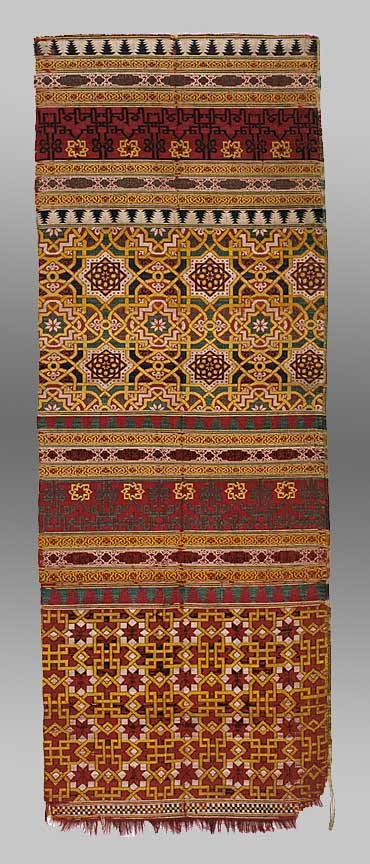Silks and Carpets for High Society
Silk Curtain Fragment
Nasrid, Spain
14th or 15th Century
Silk lampas weave
Textile Museum, Washington D.C.,
acquired by George Hewitt Myers in 1931, no. 84.11

Complex woven silks with Arabic inscriptions and blocks of abstract design in horizontal panels have a long history in Islamic Spain and North Africa; examples survive from the thirteenth century. The earlier textiles are generally enriched with precious metal thread. However, during the rule of the last Islamic dynasty in southern Spain, the Nasrids (1232– 1492), a fashion developed for the use instead of a brilliant golden-yellow silk.
The silks produced at this time are so much in keeping with the decorative style of the stucco and cut-tile work in the Alhambra Palace in Granada that their association with the Nasrid court can hardly be doubted. This has given rise to the use of the term, “Alhambra silks.” The original curtain would have been four times the width and over twice the length of this fragment, which still conveys a sense of the brilliance and splendor of the courtly art of that period.
